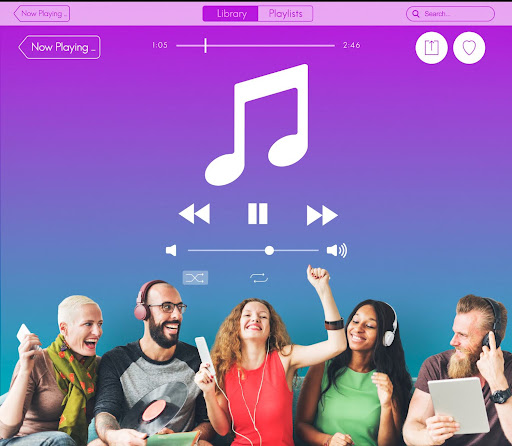I. Introduction to Online Music Promotion Services
In this digital era, the face of the music industry has completely changed. Online music promotion services have become an important tool for artists, record labels, and music lovers alike as a means of treading through the complexities of music promotion in this digital age.
The music industry is an industry that undergoes very rapid changes based on the dynamics of technologies, consumer preferences, and distribution channels. The music industry has undergone a facelift with the sudden growth of streaming services, and it presents new opportunities and challenges to artists and promoters alike. This shift from physical sales to digital downloads and streaming democratizes access, allowing independent artists to find global reach without the might of a major record label. But this again means that the competition is high, too, which makes strategic promotion even more crucial.
Setting SMART-specific, measurable, achievable, relevant, and time-bound-goals can ensure an ideal foundation is built on which entrepreneurs can establish resilient music promotion services to adapt easily in the ever-changing landscape of the music industry.
II. Market Analysis for Music Promotion Services
A proper market analysis would form the very basis upon which an online music promotion service would thrive. Three topics of interest to be looked at are the identification of target audience, analysis of market competitors, and identifying any trends in online consumption and promotion of music.
A. Identification of Target Audience
Knowing your target audience is the foundation of any successful marketing strategy. Online music promotion may be aimed at a wide target demographic that includes independent artists, record labels, and music producers. Such groups would probably be looking for services that will help them boost their exposure to reach out to more potential fans and increase the number of listeners. Leveraging social media growth, such as increasing followers on TikTok, can be a crucial tactic for artists to expand their reach and build a loyal fanbase in today’s digital landscape.
1. Independent Artists: This category involves musicians who create and distribute their music without major label support. They usually use digital channels for distribution and look for affordable ways to promote themselves.
2. Record Labels: Major and independent labels are increasingly using online promotion to market their signed artists. They are interested in services that provide data-driven insights into audience engagement and campaign effectiveness.
3. Music Producers and Managers: These individuals are mostly seeking opportunities through which they can promote their projects and artists. They appreciate services that offer fresh marketing strategies and great insight into the dynamics of the music industry.
4. Music Consumers: Not direct clients, but knowing the preferences and behavior of those who listen to music may help in the creation of promotion strategies that can appeal to potential fans.
B. Market Competitor Analysis
Competition and changing online music promotion mean complete and detailed analysis is paramount concerning the existing players operating within this market. The traditional promotion agencies or even a DIY platform would come up with direct competitors, like businesses offering similar services to you.
1. Direct Competitors: Those companies that specialize in the promotion of online music, including social media marketing companies, playlist curators, and digital marketing agencies. One can use their offering services, pricing structure, and marketing strategy as a mirror to create valuable insights about what is really working well in the industry.
2. Indirect Competitors: This would include websites that provide self-promotion for artists, such as Bandcamp, SoundCloud, and social media networks. While they may not provide any promotion services per se, they create an environment where the artist can reach audiences directly, which again is a threat to traditional promotion services.
3. Competitive Advantages: Identifying what sets your service apart from competitors is key. This could include unique service offerings, specialized knowledge in certain music genres, or innovative promotional techniques.
C. Trends in Online Music Consumption and Promotion
The landscape of music consumption is continually shifting, influenced by technological advancements and changing consumer behaviors. A successful business plan must account for these trends to ensure relevance and effectiveness.
1. Streaming Dominance: Spotify, Apple Music, and YouTube have rewritten the rules of how music is consumed. For artists, playlist placements and streaming numbers are now more crucial KPIs. Promotion services offering successful playlist placements will be very sought after.
2. Social Media Influence: TikTok, Instagram, and Twitter are fast becoming vital tools for the discovery and promotion of music. Trends on these platforms often dictate which songs make it to the top, so any promotion service must know how to use them.
3. Data-Led Approaches: The growth of analytics software means there will be greater pressure to provide data-driven marketing strategies. Gaining insight into the type of listeners one attracts, along with the performance and efficacy of marketing campaigns, could hugely inform and benefit promotional activity.
4. Format Variety: As video consumption rises across platforms, providers capable of producing rich multimedia marketing assets-such as music videos, behind-the-scenes material, and interviews-will position themselves better than rivals in this highly competitive field.
This groundwork will not only inform their business strategies but also position them for success in a dynamic industry.
III. Developing a Marketing Strategy
With the ever-evolving landscape of online music promotion, having a robust marketing strategy becomes quite indispensable in standing out and effectively reaching potential clients. This section will explore key components of a marketing strategy that will be specifically tailored for the services of music promotion, leveraging social media platforms, creating engaging content, and collaborating with influencers and artists.
A. Leverage Social Media Platforms
It looks to where music promotion has changed due to social media. It finds the largest platforms of influence for the discovery of music, with Instagram, TikTok, Facebook, and Twitter in the lead. Most significantly, it becomes important to nurture a presence on each specific outlet with each fostering a very unique audience of engagement and style.
1. Choosing Platforms: Determine on which platforms your target audience is most active and concentrate your work there. For instance, TikTok is very strong in terms of reaching the younger audiences and creating viral music trends, but for an older audience, Facebook might be more fitting.
2. Content Plan: Design a content calendar for regular posting. A balance of promotional material, behind-the-scenes content, interviews with artists, and user-generated content will keep your audience engaged. Besides, publishing platform-specific features such as Instagram Stories, Reels, and Live sessions will help increase visibility and interaction.
3. Tactics for Engagement: Active participation with your audience: reply to comments, join the conversations, and encourage likes and shares. Building the artist communities you promote builds loyalty and visibility.
B. Compelling Content Creation for Engagement
The backbone of a successful marketing strategy is to create compelling content. For an online music promotion to really hit the ground running, content will have to be informative, yet entertain and lead to action.
1. Visual Storytelling: High-quality visuals could include music videos, album covers, and promotional graphics to help capture attention. A great visual narrative can amplify emotional relationships between the artist and listener.
2. Video Content Creation: Video has become an imperative medium for music promotion in current times. Creating engaging video content be it lyric videos, backstages, or small clippings of live performances tremendously improves shares and engagement.
3. Educational Content: Providing value through educational content, such as tips for aspiring musicians or insights into the music industry, can position your brand as an authority in the field. This not only attracts artists looking for promotion but also engages music enthusiasts.
C. Collaborating with Influencers and Artists
Collaborations can amplify reach and credibility in the crowded online music space. Partnering with influencers and artists allows music promoters to tap into established audiences and build more organic connections.
1. Influencer Identification: Research and identify influencers within the music niche that align with your brand values. Consider their audience demographic, engagement rates, and content style to ensure a good fit.
2. Strategic Partnerships: Approach artists for collaborative promotional campaigns. This could include co-hosting events, joint social media campaigns, or cross-promoting content. Such partnerships can introduce your services to the artist’s fanbase, creating mutual benefits.
3. Building Relationships: Networking with influencers and artists is very important for long-term success. Attend industry events, engage on social media, and foster genuine relationships to create a supportive community that can lead to ongoing collaborations.
IV. Financial Planning and Budgeting
Financial planning and budgeting form an important part of developing a workable business plan for promoting services online. The section outlines in detail the main aspects relating to the estimation of startup costs, projection of revenue streams, and setting of financial goals and metrics.
A. Estimating Startup Costs
The development and subsequent use of a specific online music promotion service may require initial investments. This will depend on the scope of services the business can provide and tools necessary to do so effectively. Initial investment costs are considered under the following titles:
1. Website Development and Hosting: A professional website is indispensable in terms of credibility and provides a venue for your services. Costs can include domain registration, hosting, and design fees among others.
2. Marketing Materials: These can include digital pieces such as graphics and video, but also any campaign promotional content you will produce.
3. Software and Tools: Subscriptions to different marketing tools, analytics software, and social media management will be required to make things easier.
4. Licensing and Legal Fees: The services you offer may require licenses or even consultations with lawyers to ensure you don’t infringe on anyone’s copyright or violate specific industry regulations.
5. Operational Expenses: These may include recurring costs such as internet services, office supplies, and salaries or contractor fees for early hires.
After you have identified these potential expenses, you can make a more realistic budget that reflects the actual financial needs to start your business.
V. Conclusion and Future Directions
Finally, we hope you launch yourself with pride and innovation in this venture. The world of music promotion offers a wealth of possibilities for those willing to invest the time and effort into understanding its intricacies. With a solid business plan in hand and a commitment to adaptability, you can make a meaningful impact in the lives of artists and music enthusiasts alike. This could be the catalyst your venture provides to bring on stage emerging talent that will continue to create a rich and diverse music culture for years to come.
Keep an eye for more latest news & updates on Barkg Buddie!


